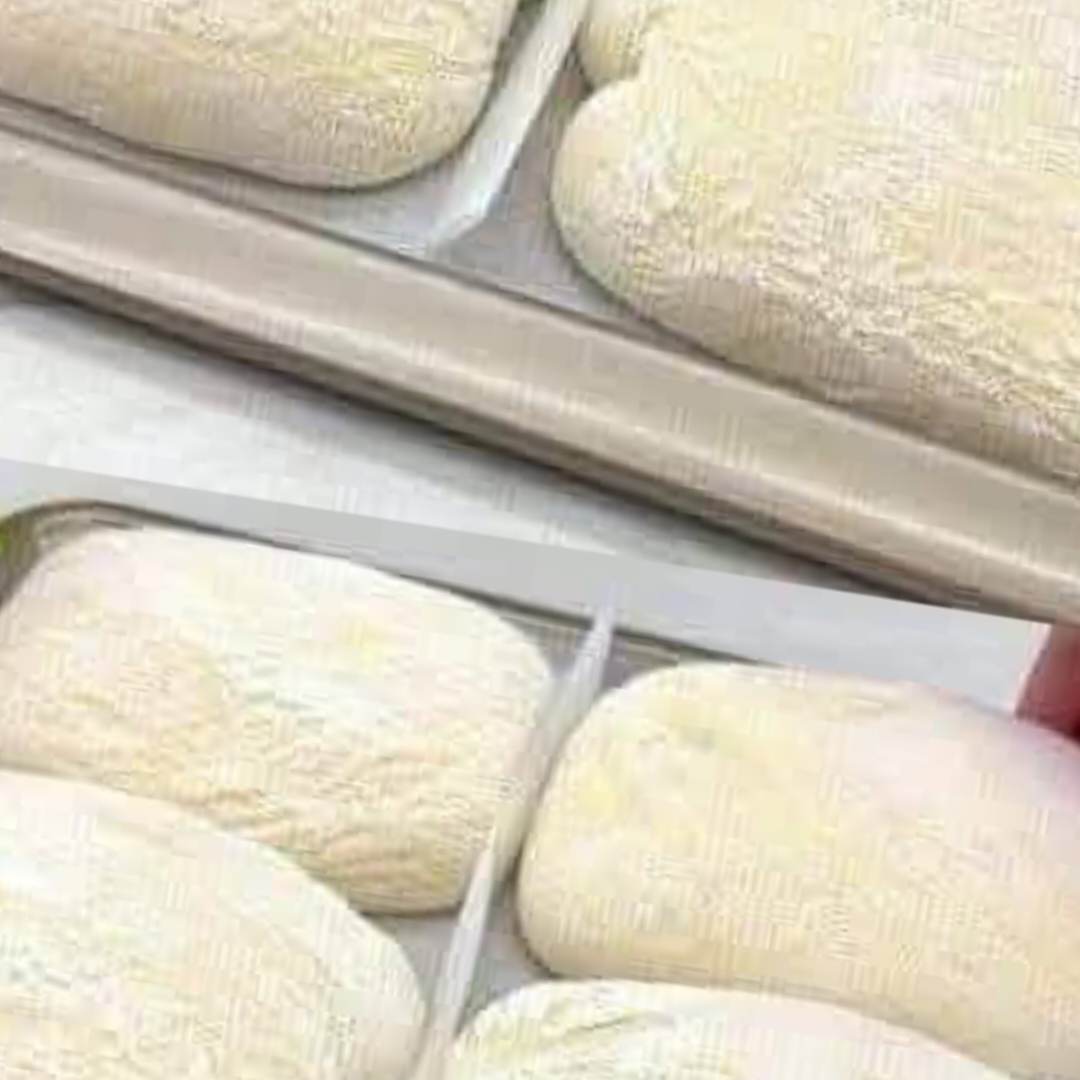Ingredients :
Ciabatta, an Italian bread known for its crisp crust and airy, tender crumb, has become a favorite among bread enthusiasts worldwide. The name “ciabatta” means “slipper” in Italian, reflecting the bread’s broad, flat shape.This rustic loaf, with its characteristic irregular holes, is perfect for sandwiches, dipping into olive oil, or simply enjoying on its own. The magic of ciabatta lies in its simplicity and the meticulous process of making it, which involves creating a highly hydrated dough that results in its unique texture.Originating from the Lombardy region of Italy in the early 1980s, ciabatta was developed as a response to the popularity of French baguettes. Italian bakers aimed to create a bread that could rival the baguette while showcasing the richness of Italian baking traditions.The result was a bread that quickly gained international acclaim and became a staple in bakeries and home kitchens alike.One of the hallmarks of ciabatta is its high hydration dough. This means that the dough contains a significant amount of water, which contributes to the bread’s open crumb and chewy texture.Working with such a wet dough can be challenging, but the effort is well worth it. The dough’s hydration level requires careful handling and gentle folding techniques to develop the gluten structure without deflating the dough.The process of making ciabatta also includes a long fermentation period. This extended fermentation allows the flavors to develop deeply, resulting in a bread with a rich, complex taste. The use of a pre-ferment, or biga, adds to the bread’s depth of flavor and improves its structure. The biga is mixed the day before and left to ferment overnight, giving the final dough a head start on flavor and texture.Baking ciabatta at home is a rewarding experience. The aroma of freshly baked bread wafting through your kitchen is truly irresistible. While the process requires patience and attention to detail, the satisfaction of slicing into a loaf of homemade ciabatta and seeing its beautiful crumb is unmatched.The crisp crust and tender interior make it a versatile bread that can be used in various ways, from making panini to serving alongside soups and salads.In addition to its delicious taste and texture, ciabatta has a visual appeal that makes it a centerpiece on any table. Its rustic, artisanal appearance, with its flour-dusted crust and irregular shape, adds a touch of elegance to your baking repertoire.Sharing a loaf of homemade ciabatta with friends and family is a delightful way to bring people together and celebrate the simple pleasures of good food.In conclusion, ciabatta is a remarkable bread that combines a crisp crust, airy crumb, and rich flavor. Its unique characteristics and the artistry involved in making it make ciabatta a beloved bread around the world. Whether you’re a seasoned baker or a novice, the journey to mastering ciabatta is a rewarding one that promises delicious results.Ingredients500 grams (4 cups) all-purpose flour10 grams (2 teaspoons) salt5 grams (1 teaspoon) active dry yeast400 milliliters (1 2/3 cups) water, at room temperature10 grams (2 teaspoons) olive oilAdditional flour for dustingInstructionsBegin by preparing the pre-ferment, or biga. In a mixing bowl, combine 100 grams (3/4 cup) of the flour, 100 milliliters (1/2 cup) of water, and a pinch of yeast. Mix until a shaggy dough forms, then cover the bowl with plastic wrap and let it ferment at room temperature for 12-16 hours.The next day, in a large mixing bowl, combine the remaining flour, salt, yeast, and the biga. Gradually add the remaining water while stirring until a wet, sticky dough forms. The dough will be very hydrated, so do not add additional flour.Cover the bowl with plastic wrap and let the dough rest for 30 minutes. This resting period, known as autolyse, allows the flour to fully hydrate and the gluten to begin developing.After the autolyse, add the olive oil to the dough. Using a dough scraper or your hands, perform a series of gentle folds to incorporate the oil into the dough. This process helps to strengthen the gluten structure without deflating the dough.Cover the bowl again and let the dough rise at room temperature for about 3 hours. During this time, perform three sets of stretch and folds, spaced 30 minutes apart. To stretch and fold, gently stretch the dough from one side and fold it over onto itself, repeating this process on all four sides of the dough.After the final stretch and fold, let the dough rest for the remaining rise time. The dough should become more elastic and bubbly.Preheat your oven to 475°F (245°C) with a baking stone or an inverted baking sheet inside. Place a shallow pan of water on the bottom rack to create steam.Generously flour your work surface and turn the dough out onto it. Divide the dough into two equal pieces. Gently shape each piece into a rough rectangle, being careful not to deflate
Préparations :
ENJOY
